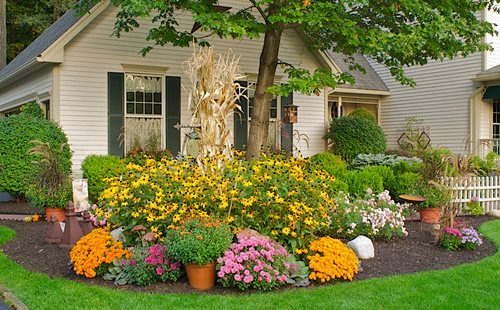When gardeners think of applying fall mulch, their thoughts typically turn to that extra layer that protects plants in cold regions from the ravages of a hard winter. But you can apply fall mulch just like you do in spring, adding enough to refresh what’s broken down. Many landscaping professionals actually practice—and prefer—fall mulching. Fall mulch works like spring mulch to retain soil moisture, suppress weed growth, and protect bare soil from erosion. But it also accomplishes a few more things:
- Fall mulch insulates the soil, providing a warmer environment for the soil-food web, including earthworms and microbes. Warm soil means these organisms stay active longer into the cold season, improving your soil.
- Fall mulch insulates plant roots. In coldest regions, the soil may eventually freeze solid in the heart of winter, but in many areas, soil cycles through freezing and thawing all winter long. Those freeze-thaw patterns put stress on anything in the top few inches of soil, including plant roots. Mulch moderates the temperature swing.
4 Reasons to Practice Fall Mulching
- Mulch in fall to skip that job come spring. Every gardener knows spring is a busy time, and late fall typically offers a leaner to-do list of garden chores. Fall mulching frees up time next spring.
- Cooler weather makes tackling a heavy job like mulching more pleasant. You work up less of sweat when air temps hover in the 50-degree range.
- Cut back perennials for winter, and you create a clean bed surface that makes mulching a snap. There’s no dodging emerging bulbs, perennial shoots or seedlings. The bonus is that cutting perennial stems down in fall takes that chore off your spring to-do list.
- Fall mulching gives you another chance to enjoy the Great Outdoors before winter weather ends your outside garden season.

